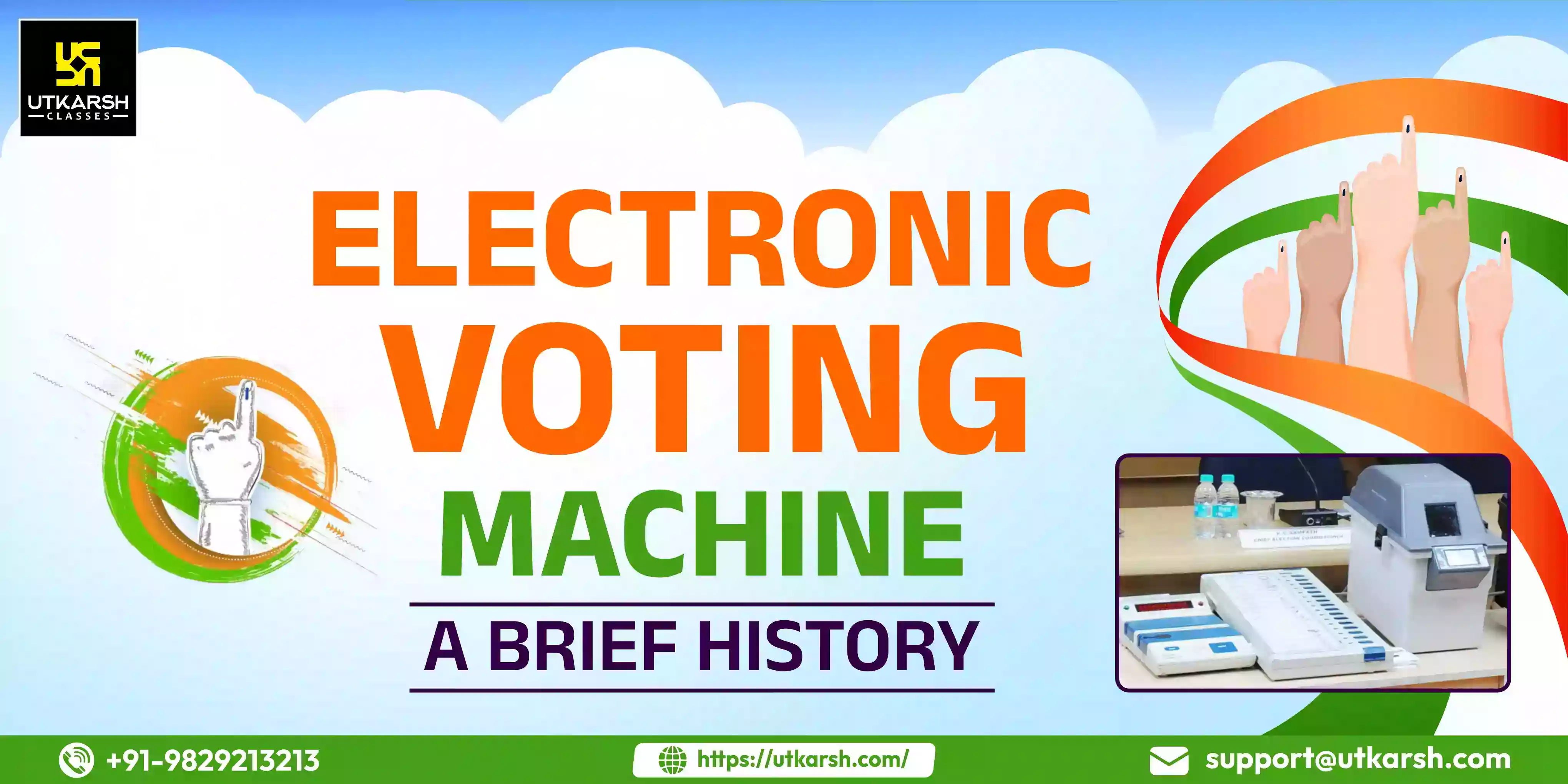Ready to learn?
Take the first step toward achieving your educational goals. Whether you’re preparing for exams or expanding your knowledge, getting started is just a click away. Join us today and unlock your full potential
832, utkarsh bhawan, near mandap restaurant, 9th chopasani road, jodhpur rajasthan - 342003
support@utkarsh.com
+91-9116691119
Support
Learning Resources
Rajasthan Govt Exams
Central Govt Exams
Civil Services Exams
Nursing Exams
School Tuitions
Other State Govt Exams
Agriculture Exams
College Entrance Exams
Miscellaneous Exams

© 2025 Utkarsh Classes & Edutech Pvt. Ltd. All Rights Reserved

Utkarsh Classes
Updated: 19 Apr 2024
4 Min Read

The responsibility of conducting polls to elect members of the Lok Sabha and state legislative assemblies in India is entrusted to the Election Commission of India (ECI) by our Constitution. ECI has implemented several measures over time to guarantee fair and unbiased elections. To further this objective, the introduction of Electronic Voting Machines is a significant step towards achieving transparent and impartial elections.
Top Posts
Frequently asked questions

Still have questions?
Can't find the answer you're looking for? Please contact our friendly team.
Visit an Offline Centre Near to You.

1-Liner PDFs FREE !
Kumar Gaurav Sir ki Class PDF aur Daily One-Liner CA – Bilkul Free! Rozana preparation ko banaye aur bhi Damdaar!